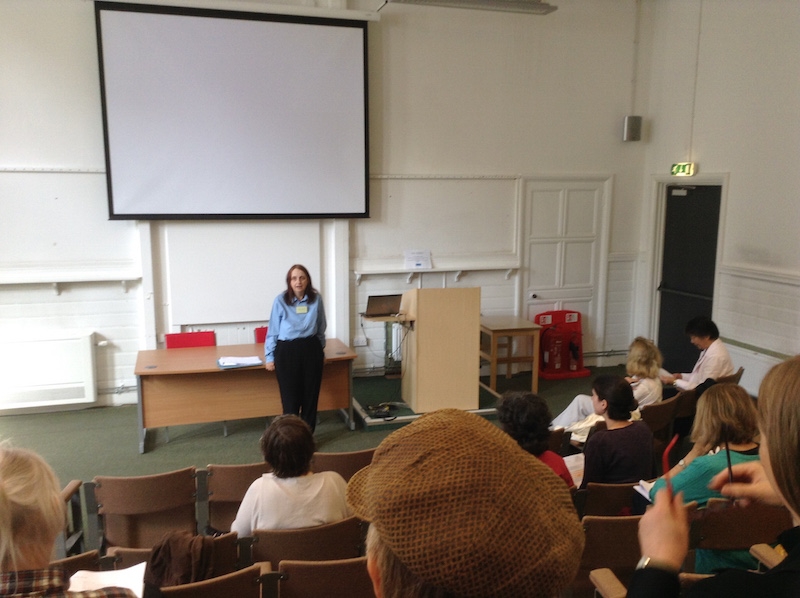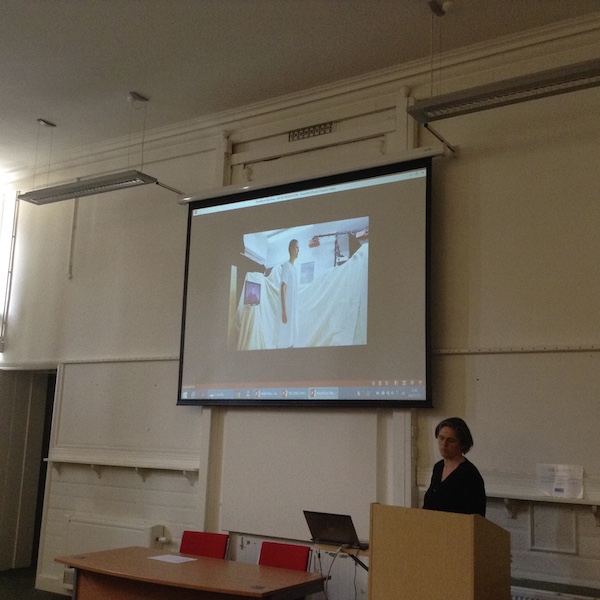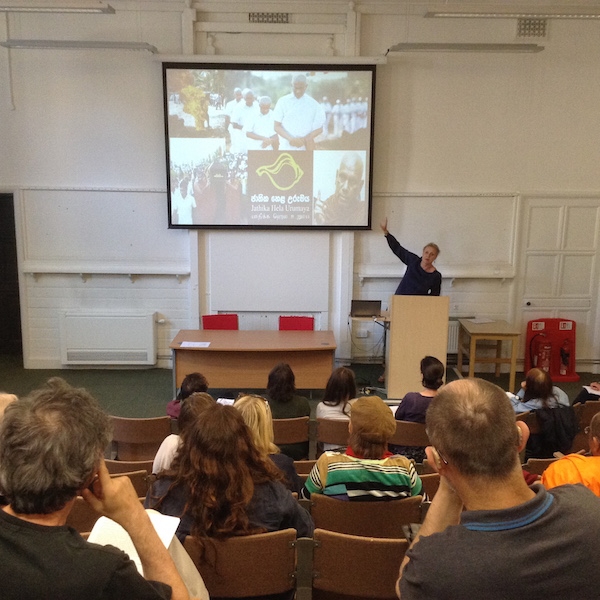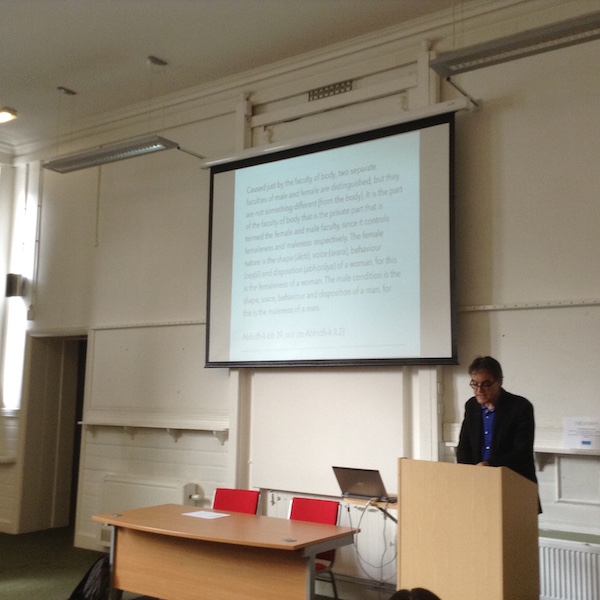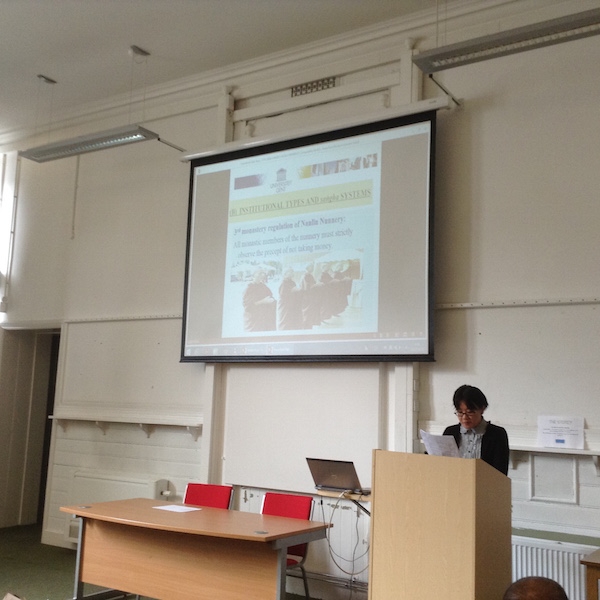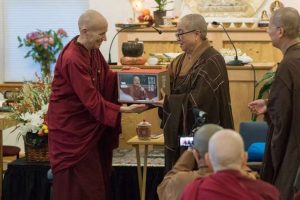Paying tribute to Ian Harris and Lance Cousins
The UKABS (United Kingdom Association of Buddhist Studies) annual conference this year was held from 15–16 July at The Storey in Lancaster and attended by more than 40 speakers and other participants. On the morning of the first day, UKABS acting president Cathy Cantwell welcomed everyone and reminded us of the recent passing of two important Buddhist scholars in the UK, Ian Harris and Lance Cousins.* Peter Harvey and Ian Reader were invited to speak about Ian’s and Lance’s contributions to Buddhist scholarship. As Peter reported, both Ian and Lance were founding members of the UKABS in the mid-1990s. Lance was the first president of the UKABS and Ian Harris was its first treasurer. Lance, who passed away in March this year, was an expert on the Pali language and Abhidhamma, and a keen practitioner of shamatha (“calm-abiding”) meditation. Peter recalled that Lance’s mind was always very clear.
Ian Reader, who had been a close friend of Ian Harris for several decades, shared that besides being a pioneering scholar of Cambodian Buddhism, Ian had also been a good organizer, a good walker, and a good friend, and could happily discuss a wide range of topics, from academic subjects to landscape aesthetics to organic gardening. Losing such a great friend just last December, Ian Reader reflected with tears in his eyes that he had missed his last chance to hug Ian when they met for the last time in November. After the memorial speeches, all the participants were invited to a delicious vegetarian lunch hosted by Ian Harris’s wife Gwen in their home village of Burton in Lonsdale.
Presentation of papers
The papers given at the conference covered a vast range of disciplines and geographical areas. On the first day, Ashley Thomson from SOAS gave a keynote speech titled “New Directions for Buddhist Studies in the UK.” Arguing that Theravada and Mahayana did not coexist in the 14th and 15th centuries, she unpacked the concept of Theravada Buddhism in the context of ancient Cambodia from the archaeological perspective. Next, Brian Black from Lancaster University and Iselin Frydenlund from the Norwegian Centre for Human Rights at the University of Oslo presented their papers. In his paper “Dialogues with Kings: The Relationship between Politics and Religion in the Nikayas,” Brian Black argued that the debates about secularism are nowadays related to pre-modern India by investigating the dialogues between kings and renunciates in the Nikayas and the Upanishads. In her paper “Particularist Goals through Universalist Means: The Political Paradoxes of Buddhist Revivalism in Sri Lanka,” which is a book project about Buddhism and political process and a tribute to Ian Harris, Iselin Frydenlund demonstrated that Jathika Hela Urumaya, a political party comprised of Buddhist monks, has used the law as a means to promote their Buddhist political agenda, struggling between pre-colonial ideals of a just Buddhist ruler and liberal democratic notions of equality. Before the close of the first day and the conference dinner, Rita Langer from Bristol University showed six short documentary films on “A Buddhist Cosmology in Food,” which demonstrated how food is offered to and shared with beings in the various realms—humans, gods, animals and ghosts—in Sri Lanka. The documentary videos are available on vimeo.com.**
On the second day, two of the papers were related to Buddhism, gender, and monastic regulations. Rupert Gethin from Bristol University gave an interesting keynote address titled “‘Girls Play with Dolls, Boys Play with Ploughs’: Sexual and Gender Differentiation in the Abhidharma.” Based on Abhidharma accounts of maleness and femaleness and differences in physical characteristics and behavior, Gethin discussed not only the ancient understanding of reproduction and gender hierarchy, but also sex change and bisexual behavior—topics in contemporary biology and gender research. His presentation was followed by Tzu-Lung Chiu from Ghent University with her paper “The Practice of the Precept against Money-handling in Contemporary Chinese Buddhist Contexts,” which examined how the precept against money handling is interpreted and practiced in contemporary Buddhist institutions in Taiwan and Mainland China. The paper revealed a hitherto under-theorized conflict between the Vinaya rules and the bodhisattva ideal, as well as a diversity of opinions on the applicability of the precept against money handling as shaped by sociocultural context.
Postgraduate papers
There were three papers in the postgraduate panel this year. In his paper “Reflections from Buddhist Narrative on the Tension between Community and Renunciation,” Indaka Weerasekera from Bristol University discussed how the Theravada tradition may have tried to narrate the tension between renunciation and community, using a relatively understudied story in which the Buddha dwells alone in the “Protected Forest” at Parileyyaka with only animals as companions. In her paper “Daoxuan and the Shijia Fangzhi: The Creation of a Buddhist Sacred Geography of China,” Janine Nicol from SOAS examined the Shijia fangzhi (Geographical account of Shakyamuni) authored by the monk Daoxuan in 6th-century China, and demonstrated how the text interpreted China as an ideal Buddhist country using the records of Xuanzang’s journey to India. In the last paper, Pema Clark from the Department of Drama of the University of East Anglia presented her performance art work “Performing Sand: A Case for the Abandonment of Video Documentation in Buddhist Inspired Live Art” in addressing the dialectic inherent in documenting performance art. Showing a performance video of her continuously walking and prostrating in between videos of her deceased mother and estranged father, she offered alternative methods of documentation as part of the creative process to keep the work “alive” in the mind of the audience, coinciding with the key concept of impermanence in Buddhism.
Roundtable discussion
The conference ended with a roundtable discussion on “Communal Jurisdiction of Non-Ordained Nuns in Myanmar, Thailand, and Sri Lanka,” funded by The Robert H. N. Ho Family Foundation Collaborative Research Fellowships in Buddhist Studies. First Petra Kieffer-Pülz from the Academy of Sciences and Literature in Mainz, Germany, presented a keynote address titled “The Arrangement of Rules in the Bhikkhunipatimokkha and the Question of Re-ordination of Former Buddhist Nuns.” She highlighted some aspects of the arrangement of rules in the Bhikkhunipatimokkha (the code of discipline for nuns) of the Theravada tradition since the content and sorting criteria of some of the rules vary in different Buddhist schools, especially in those which do not transmit a complete Bhikkhunipatimokkha in their canon. She also examined the question whether former Buddhist bhikkhunīs may be re-ordained according to the statements associated with this topic from the Theravadin monastic code of discipline (Vinaya) and the commentarial (atthakatha, c. 5th century) and sub-commentarial (tika, c. early 10th century) literature.
In South Asian countries, there are almost 100,000 non-ordained nuns who are neither laywomen nor bhikkhunīs (fully ordained Buddhist nuns). Although there are many studies and publications about the monastic rules and regulations of bhikkhunīs, the communal rules or code of conduct observed by non-ordained nuns in the Southern tradition have been little studied. Following Petra Kieffer-Pülz’s presentation, Hiroko Kawanami from Lancaster University, Monica Lindberg Falk from Lund University in Sweden, and Nirmala Salgado from Augustana University in the US engaged in a roundtable discussion on this subject.
Kawanami discussed both the practice of observing communal rules in nunnery schools among thilashin (non-ordained Buddhist nuns) in Myanmar and the disputes and practical problems within the monastic community. Salgado focused on how the dasasilmata, the non-ordained nuns in Sri Lanka, sustain communal cohesion through rules in the community in both meditation centers and education centers. Lastly, based on her recent fieldwork in Thailand, Lindberg Falk explained how the state has implemented related policy in controlling the non-ordained nun (maechii or sikkhamat) community in relation to the growing issue of “fake maechii.” Next summer, the research team will continue their work by comparing variations within the Southeast Asian region and examining how large Buddhist communities of female renunciates are kept in order and regulated to protect and sustain their monastic life.
At the Annual General Meeting, Cathy Cantwell was elected UKABS president for the next four years. She announced that UKABS 2016 would be held at SOAS in London in September. Additionally, a conference on “Translating Buddhism” will be held at York St John University from 30 June to 2 July. The call for abstracts has already commenced, and scholars and research students were invited to present their work.
Further details about the two conferences can be found on the websites of UKABS (UKABS) and York St John University (Translating Buddhism).
*For more information about Ian Harris and Lance Cousins, see International Association of Buddhist Studies – News & Events.**A Buddhist Cosmology in Food


